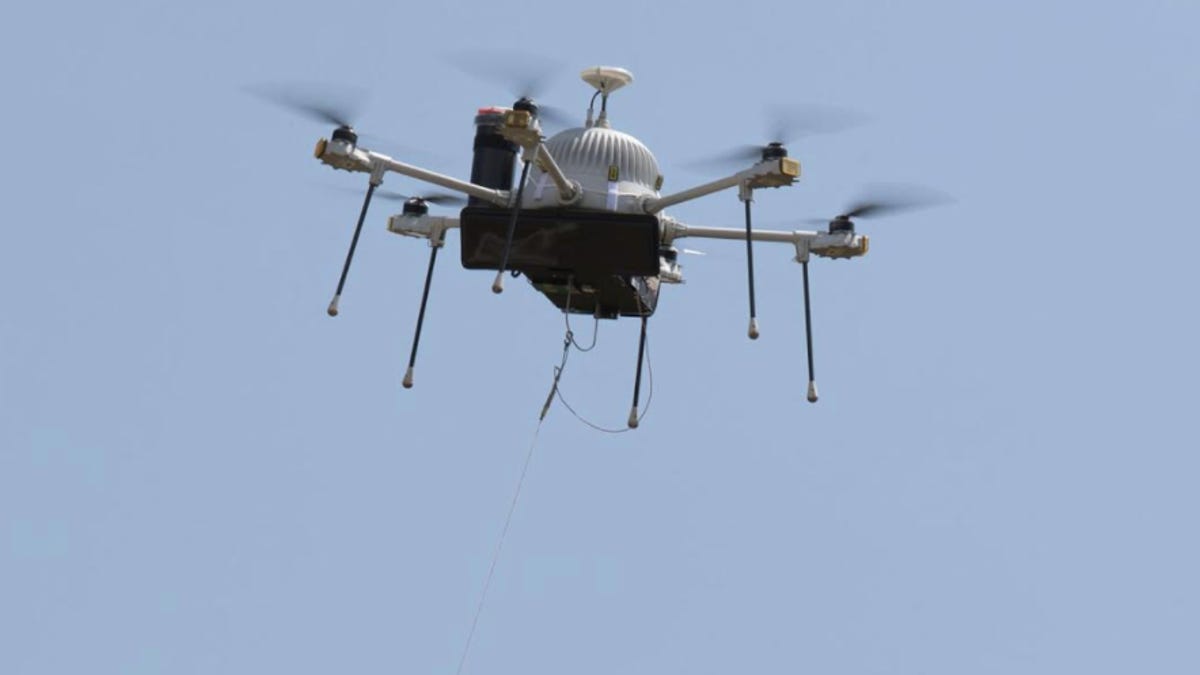Sprint turns drones into mini cell towers
The No. 4 wireless carrier has put its Magic Box signal boosting technology on a drone to provide temporary wireless phone service.

Sprint tested its cell tower-on-a-drone technology in Texas last week.
Sprint is taking cell service airborne by mounting lightweight cellular radios to drones.
The wireless carrier said this week that it has successfully adapted its Magic Box signal boosting technology to fit on a drone and provide temporary cell coverage over as many as 10 square miles. The company tested the setup, which uses a lighter version of the mini cell tower and a drone from CyPhy Works, last week in Texas, 30 miles outside of Dallas.
Sprint launched the Magic Box earlier this year. The box, which is the size of a shoe box, normally sits in your house to improve indoor 4G LTE service using Sprint's 2.5GHz spectrum. Unlike other signal boosters, Magic Box doesn't require a broadband connection. Instead, it uses a dedicated cellular channel to the nearest Sprint cell tower.
Now Sprint has adapted the technology to use it on a drone and temporarily increase network capacity during special events, like a concert or a sports contest, or to restore cell phone service following a disaster like a hurricane, said Günther Ottendorfer, COO of technology at Sprint. Wireless carriers often use cell towers on wheels and other temporary equipment to boost capacity at special events or to provide additional network coverage when permanent infrastructure has been damaged.
Ottendorfer said a drone equipped with a cellular signal booster is just another tool the carrier can use to improve and restore service. The advantages include faster deployment and a wider area of coverage, because the drone can be deployed up to 400 feet in the sky.
He added that more needs to be done to make the Magic Box equipment lighter, but he expects Sprint to be using the technology in its network next year.
"It's an exciting proof of concept," he said.
Wireless carriers have already begun using drones in the wake of big disasters. Following Hurricane Harvey, which devastated areas around Houston and the Gulf coasts of Texas and Louisiana, all four major US wireless carriers flew drones in flooded areas to assess damage to towers and other infrastructure. Sprint is one of the first carriers to adapt a cellular radio to use a drone to provide cellular coverage. AT&T last year announced plans to connect drones to its 4G LTE network. The carrier tested its so-called Flying COW in February, transmitting and receiving high speed data from a drone.
First published Sept. 27 at 3:35 p.m. PT.
Update Sept. 28 at 4:26 p.m.: Adds information about AT&T's connected drone program.

